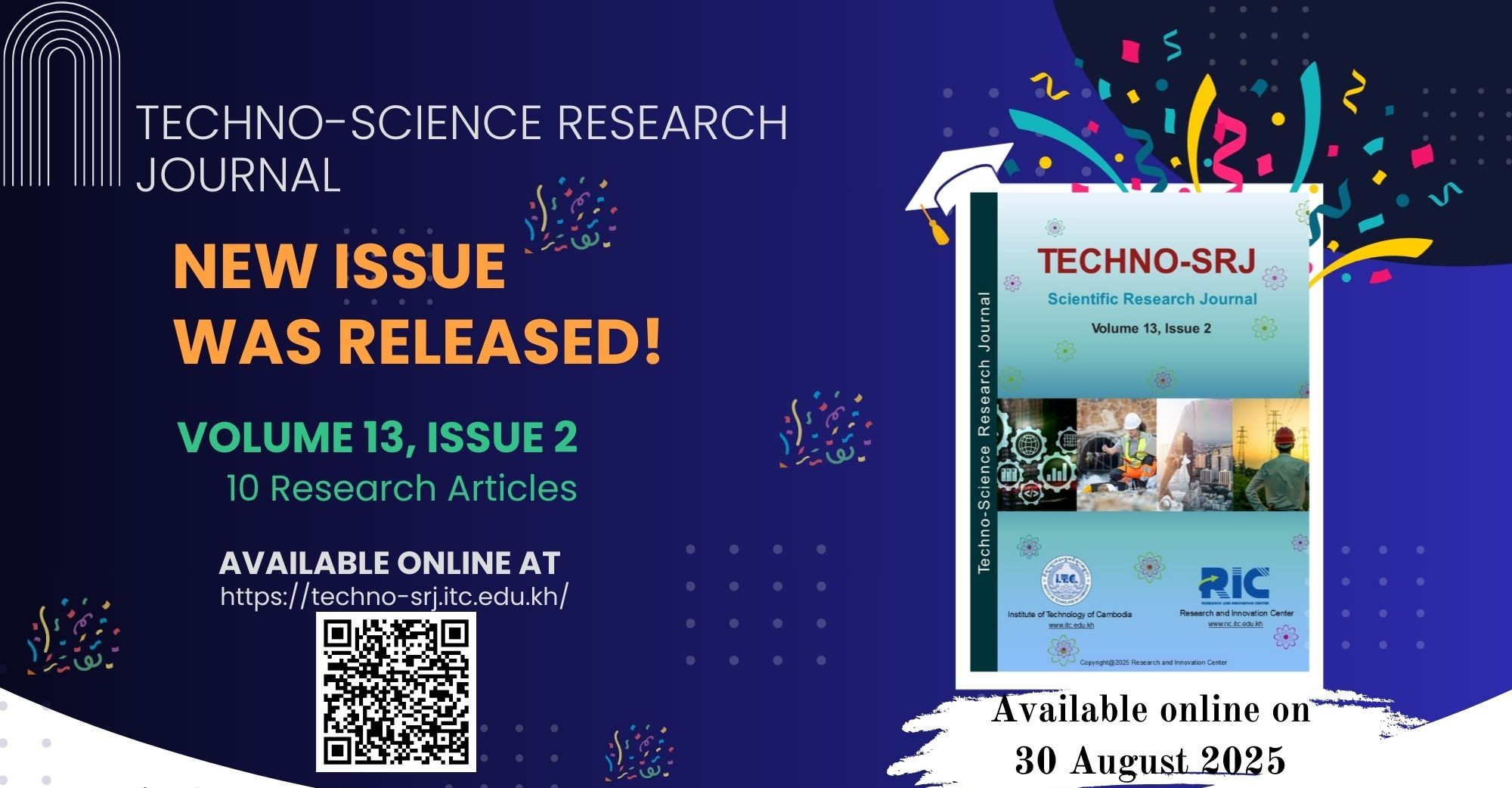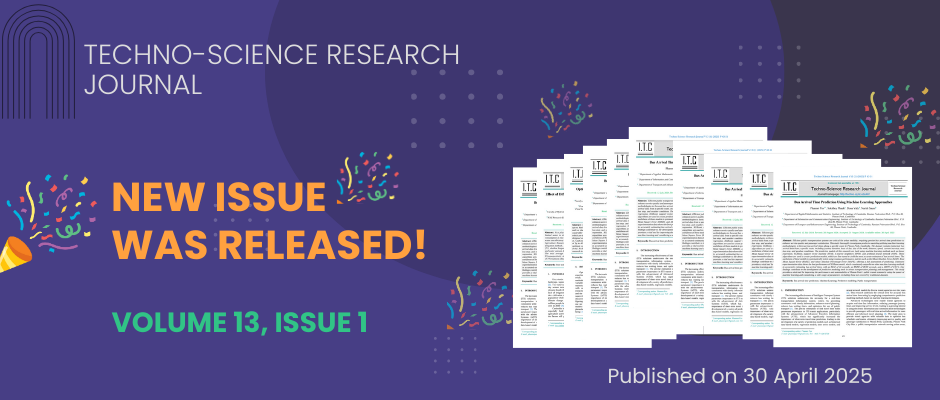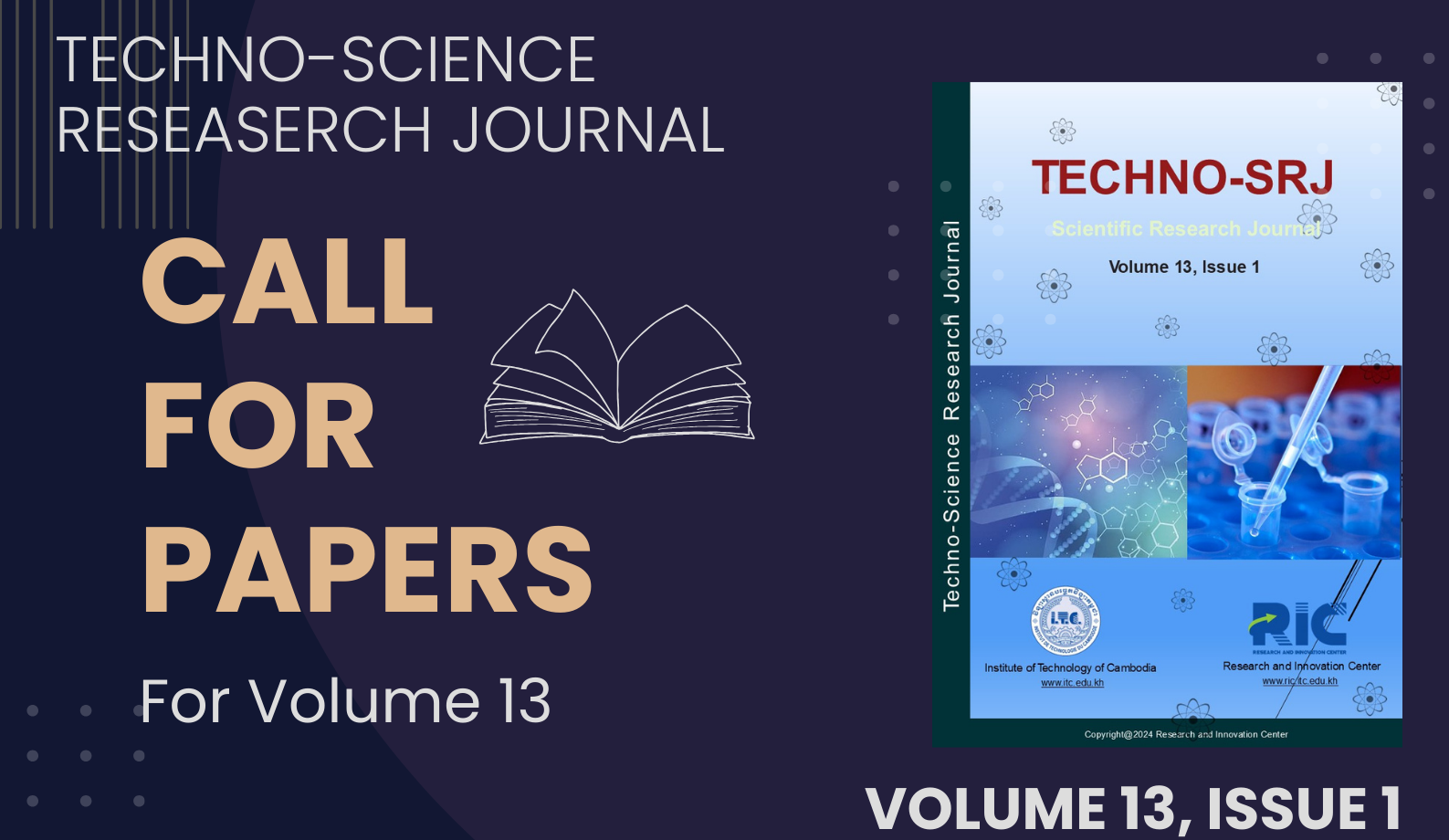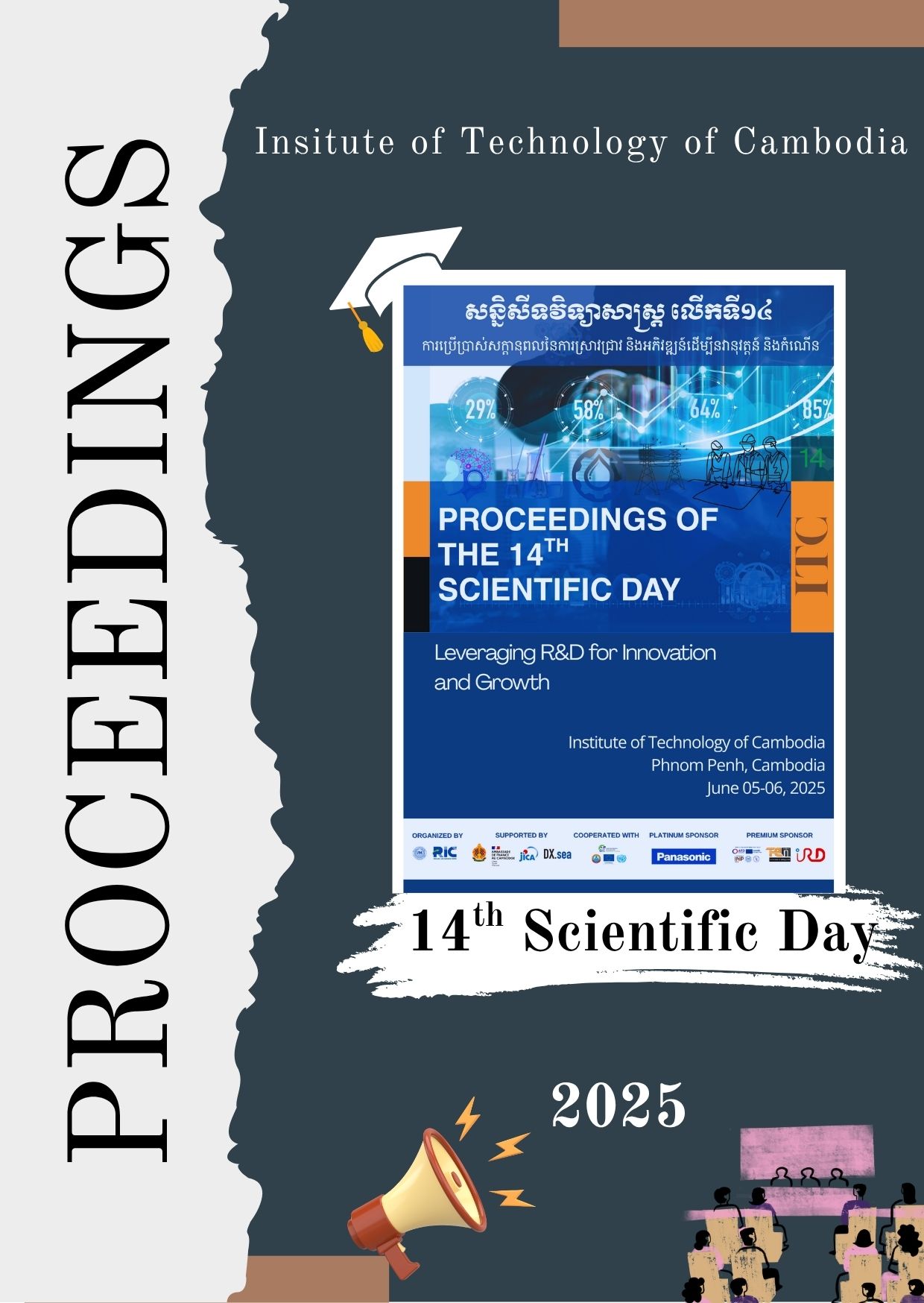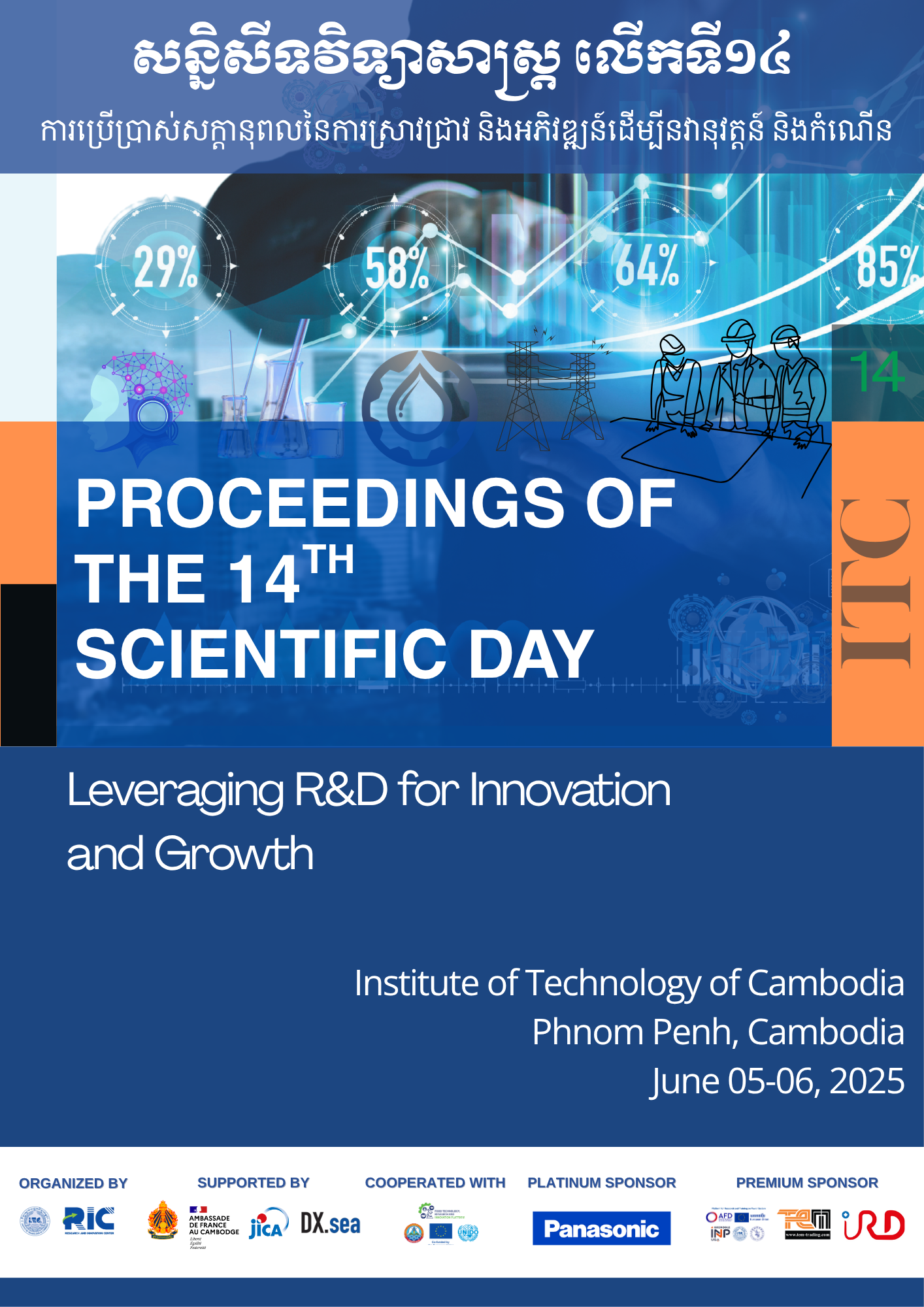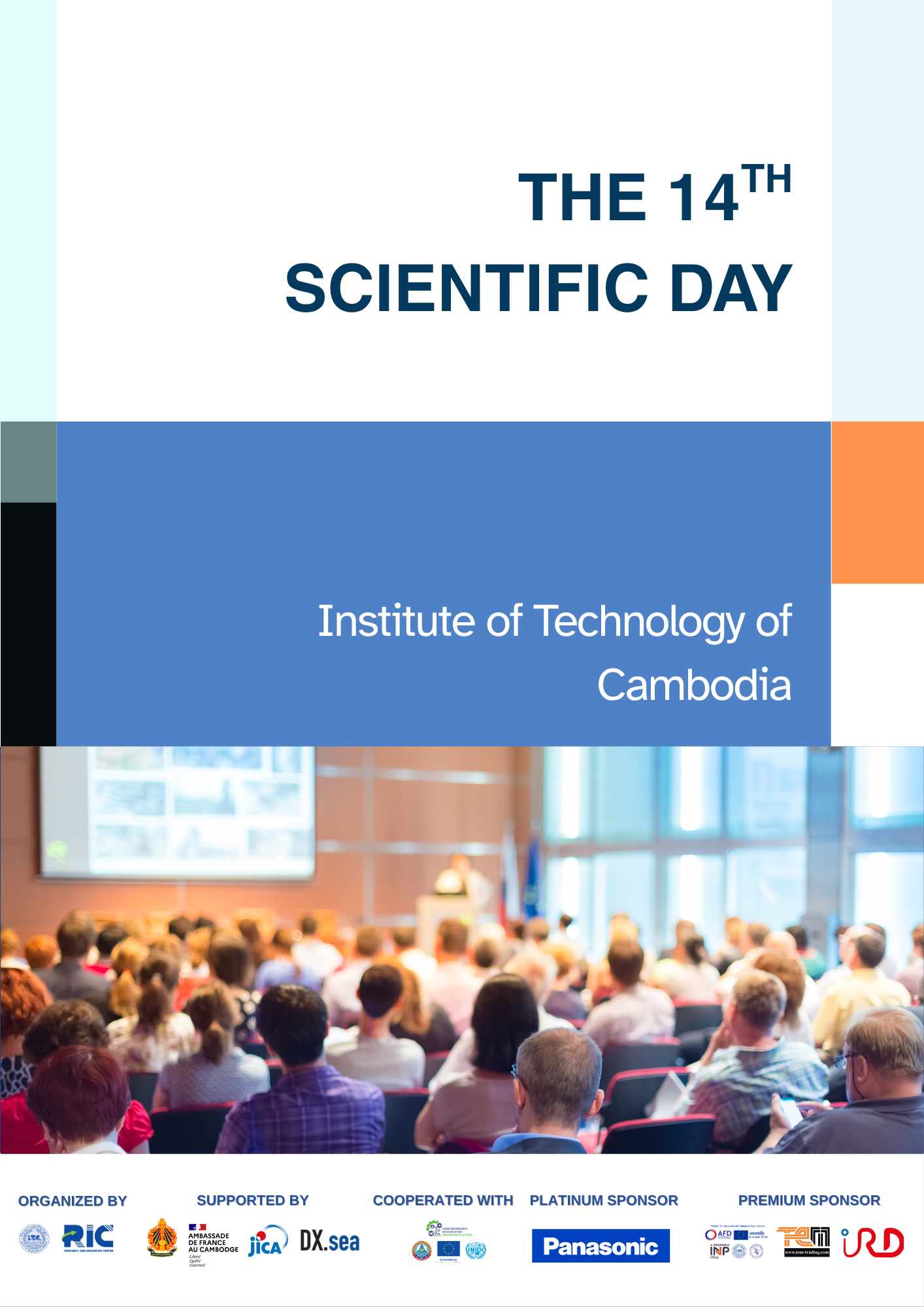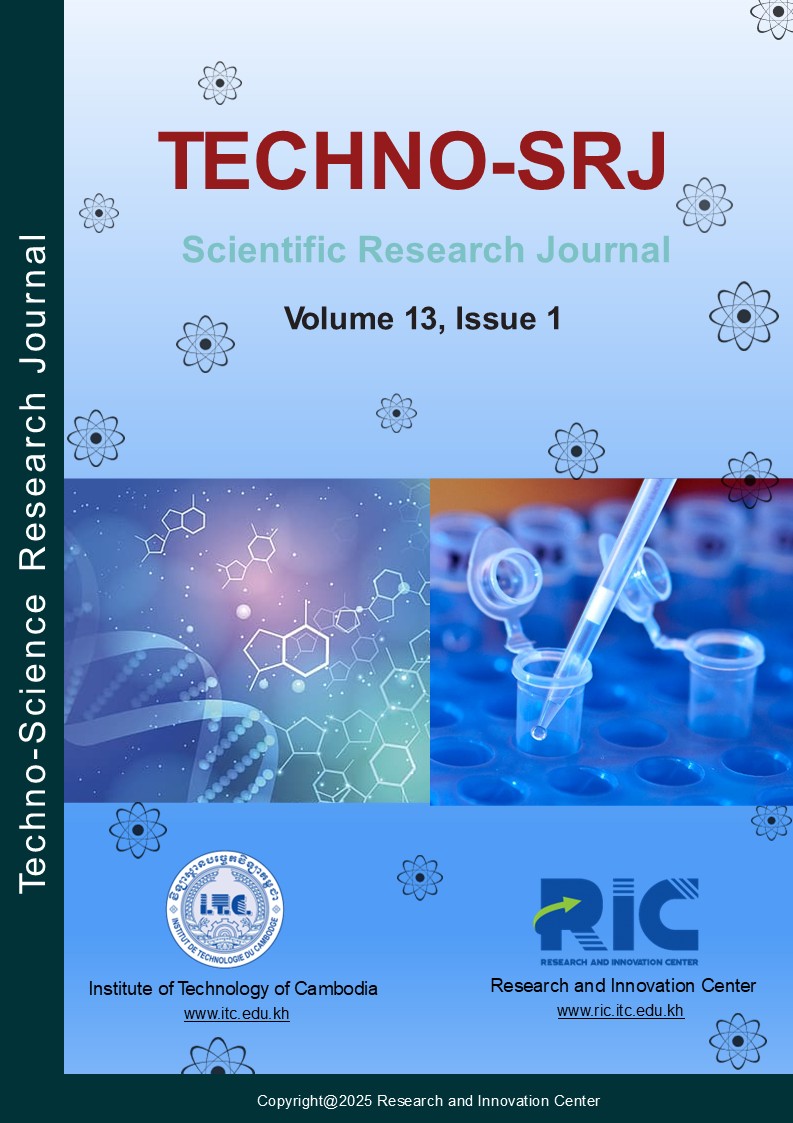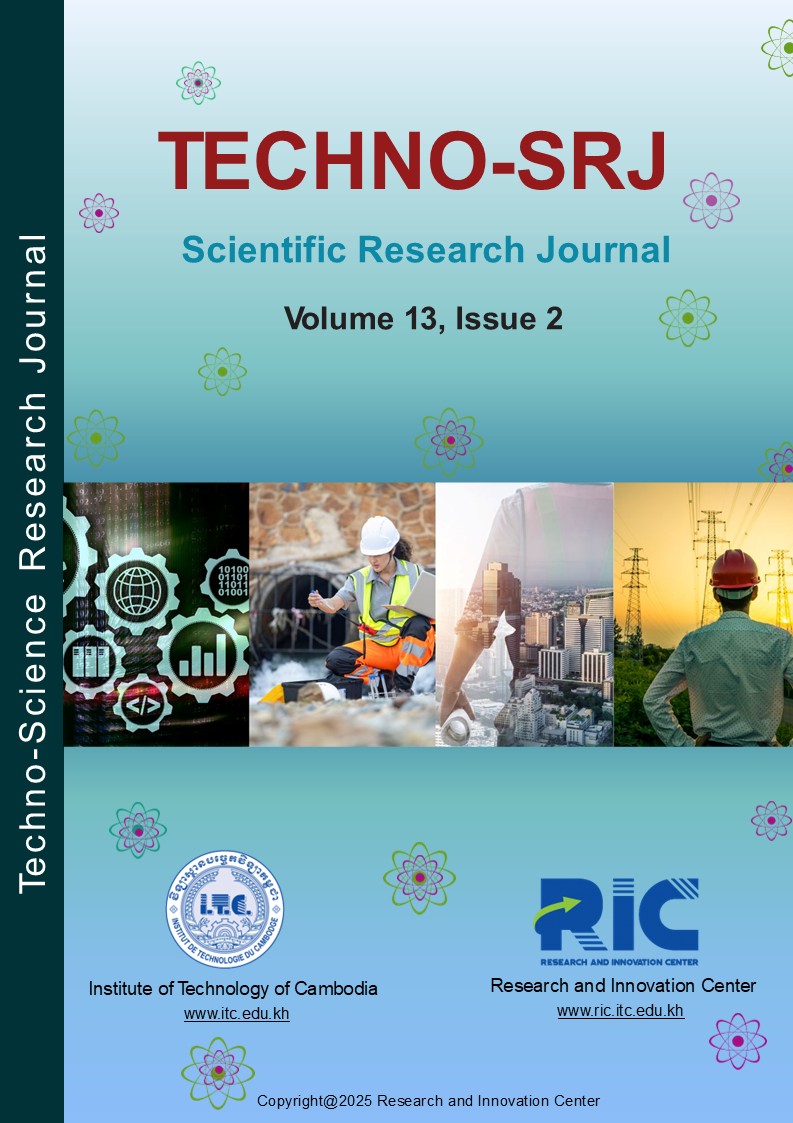Latest Issue
Empowering Education with Online Khmer Handwritten Text Recognition for Teaching and Learning Assistance
Published: August 30,2025Undergraduate Student Dropout Prediction with Class Balancing Techniques
Published: August 30,2025Status of Seawater Quality at Koh Rong Island, Sihanoukville, Cambodia
Published: August 30,2025Low-Complexity Detection of Primary Synchronization Signal for 5G New Radio Terrestrial Cellular System
Published: August 30,2025Word Spotting on Khmer Printed Documents
Published: August 30,2025Tuning Hyperparameters Learning Rate and Gamma in Gym Environment Inverted Pendulum
Published: August 30,2025Examining Passenger Loyalty in Phnom Penh Public Bus System: A Structural Equation Modelling Approach
Published: August 30,2025Prediction on Load model for future load profile of Electric Vehicle charging demand in Phnom Penh
Published: August 30,2025Economic Study on Integrating PV-DG with Grid-Tie: Case Study in Cambodia
Published: August 30,2025Recent Articles
In this paper, an adjoint sensitivity analysis with an iterative first-order gradient descent optimization technique is proposed in conjunction with the finite-difference time-domain (FDTD) method to design a broadband multi-layer planar electromagnetic wave absorber made of expanded polystyrene mixed with graphite powder. This analysis needs an additional adjoint field simulation for the sensitivity calculation of design parameters (thickness an
The present study aimed to assess the proximate chemical compositions of 16 rice varieties collected from Battambang, Takeo, and Prey Veng provinces in Cambodia. Proximate chemical compositions including moisture content, protein, total carbohydrates, fiber, ash, lipids, and amylose content were subjected to analysis. The results showed that all chemical compositions of the 16 rice varieties varied significantly (p <0.05). The carbohydrates and p
Rural electrification is a critical challenge in many developing countries, where conventional grid extension is often not feasible or cost-effective due to low load density and long distances. Hybrid AC/DC microgrids offer a promising alternative solution, providing a reliable and sustainable electricity supply to rural communities. This study presents a comparative analysis of four clustering techniques (hierarchical, k-means, fuzzy c-means, an
Distributed photovoltaic (PV) and battery energy storage (BES) generating systems are interesting to power utilities owing to their benefits in terms of technology, business, and the environment. However, improper distributed generation (DG) sizes and locations might have an impact on the technological distribution network. The aim of this study is to improve the production of grid-connected PV on the electrical three-phase poles of a low-voltage
In the field of wheel mobile robots, researchers focused on learning and developing new algorithms to improve robot capabilities. But the lack of the actual hardware along with expensive costs has limited the study to only simulation. Furthermore, the result from simulation alone cannot conclude the robot’s actual performance in real-time. A plug-and-play robot structure is designed and tested for its function. In addition to that, finite element
DC motor is a device that converts electrical energy into mechanical energy. Nowadays, Permanent Magnet DC (PMDC) motors are used in a variety of settings, including residences, commercial buildings, and the manufacturing industry. PMDC motors are currently being used in many applications ranging from everyday tasks to industrial tasks such as industrial machines, automobiles, and robotic applications. In this paper, we present the parameter esti
Quadcopters or quadrotors have always desired to fly smoothly and stay on their path in order to enhance their application. This better performance can be achieved depending on the accuracy of the data. However, relying purely on sensor data cannot be accepted due to the inaccuracy of measurement, thus state estimation to filter noise out is important. This paper is focused on performance evaluation on quadrotors attitude estimation using Unscent
Natural rubber is a polymeric material composed of hydrocarbon chains possessing high flexibility and green strength making them suitable for various applications including automotives tires, construction materials, and as floor protective materials etc. Special properties of rubber are obtained from compounding with various ingredients one of which is inorganic fillers including carbon black, silica, and clay minerals. The concept of processing
For Hydrological and Meteorological research over Cambodia with sparsed rainfall gauges, reliable rainfall is essential. In this study,12 gridded rainfall datasets with a reasonable spatial resolution including Asian Precipitation Highly Resolved Observational Data Integration Towards Evaluation (APHRODITE), Gridded rainfall Observational Dataset for precipitation and temperature Southeast Asia (SA-OBS), Integrated Multi-gridded rainfall Retrieva
Time series forecasting is a well-established research domain, particularly in finance and econometrics, with a multitude of methods and algorithms proposed to achieve accurate future trend predictions. This study aims to examine the effectiveness of two popular models, ARIMA and LSTM, for predicting trends in gold prices in finance and econometrics. Monthly global gold prices from January 2010 to December 2022 are analyzed, with a training set f
E-mail Alert
Add your e-mail address to receive forthcoming issues of this journal




